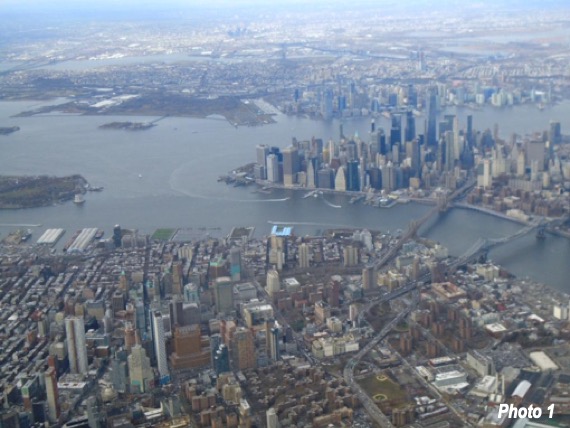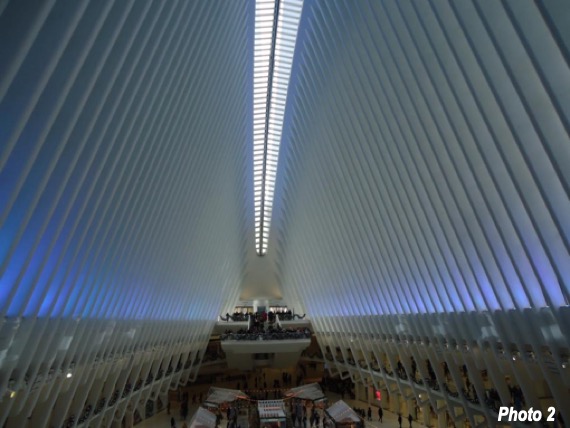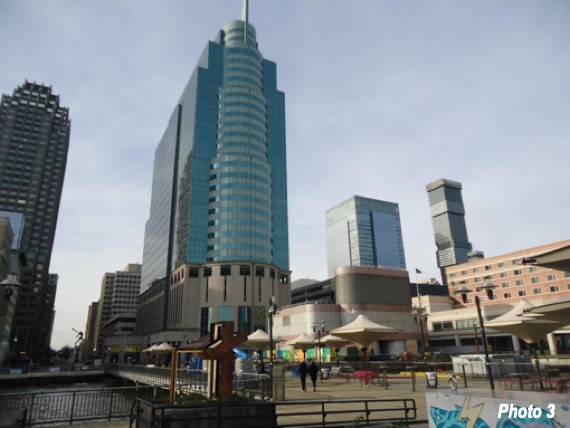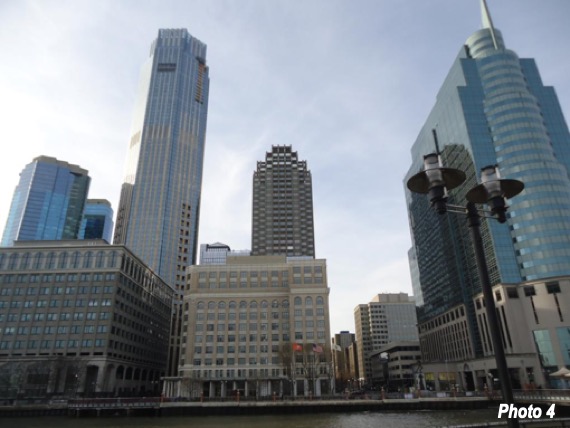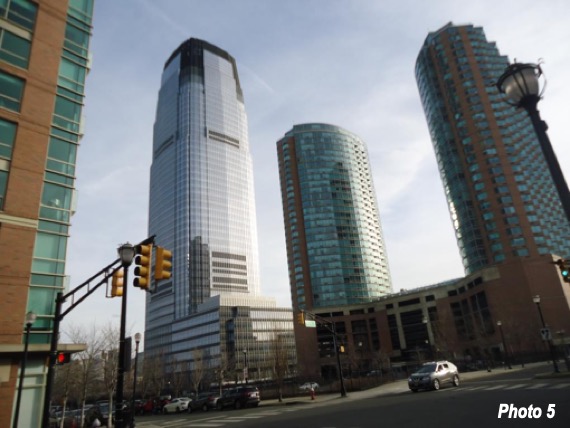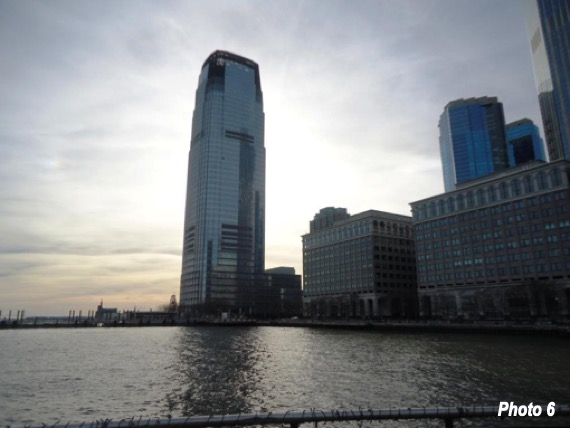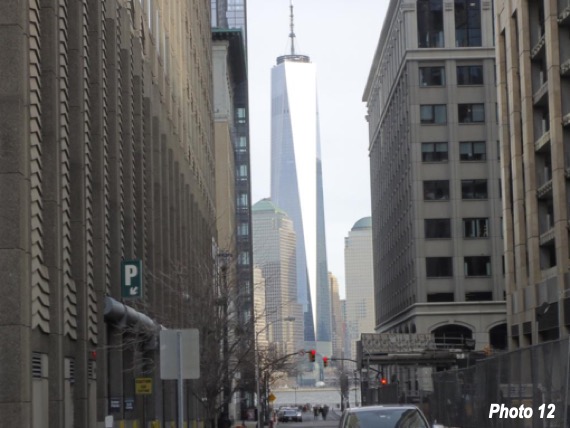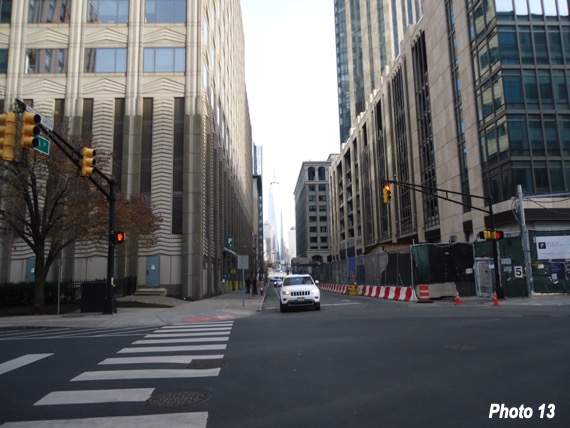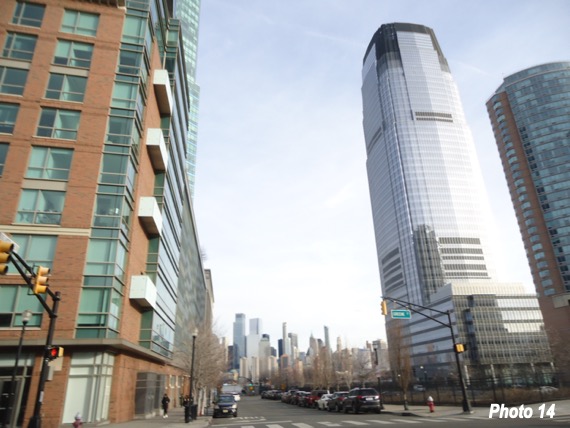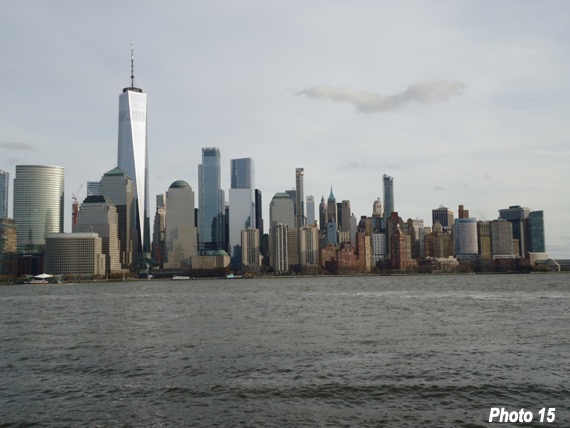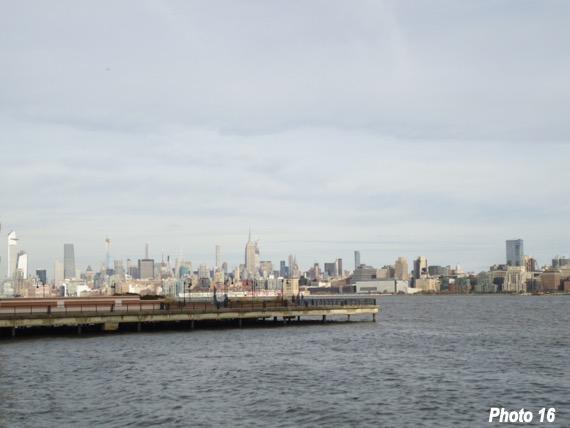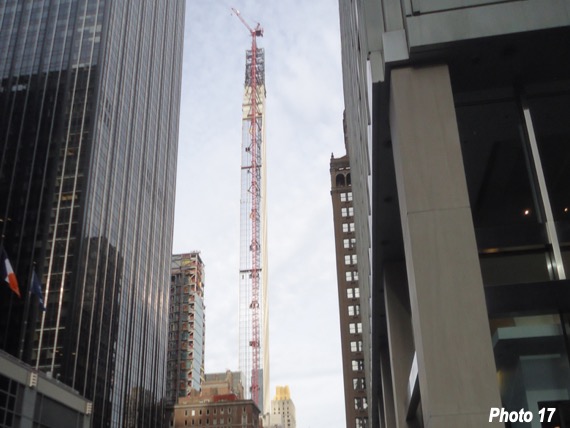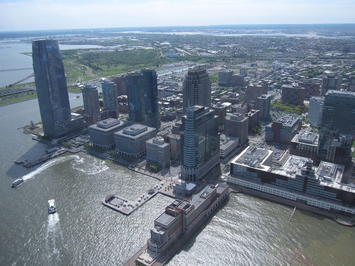
More than a quarter century ago, Joel Garreau’s classic Edge City; Life on the New Frontier described the rise of commercial centers outside the historic downtowns (central business districts or CBDs). More often than not, Edge Cities are automobile oriented centers usually in the suburbs or exurbs( but may also be in the core city, such as Century City in Los Angeles) Generally, employment densities are higher than average, but far less dense than the larger CBDs (such as in New York and Chicago). A very few are far higher density and largely transit oriented, such as La Defence in Paris and Canary Wharf in London.
Exchange Place, in Jersey City is one of that few. It is located directly across the Hudson River from Lower Manhattan. It is served by the PATH (Port Authority Trans Hudson) rail system from stations at the World Trade Center in Manhattan, with service extending westward to Newark.
The location of Exchange Place is illustrated in Photo 1, which shows downtown Brooklyn in the foreground (not an edge city, but rather an historic downtown), Lower Manhattan, across the East River and Exhange Place across the Hudson River. Downtown Newark is also visible, near the middle and top of the photograph, with the Pulaski Skyway, a 3.5 mile long structure that is US highways 1 and 9. The Manhattan Bridge is the rightmost across the East River and the Brooklyn Bridge is to the left.
New York City subway riders can transfer to the PATH trains at the new World Trade Center Station (Photo 2) to reach Exchange Place, which is the first stop (Photo 3).
The tallest building in Exchange Place, 99 Hudson Street and also the tallest in New Jersey is in the middle of Photo 4 The building is 889 feet high (271 meters) and 76 floors. This building is taller than any building outside Manhattan in the world before the late 1960s completion of the John Hancock Center in Chicago. Even today, 99 Hudson Street is taller than just a few buildings in Lower Manhattan.
Photos 5 and 6 are street scenes. Photo 5 shows the Goldman Sachs Tower, which is 781 feet tall (238 meters) and 42 floors (complete building on the left). Photo 6 shows the Goldman Sachs Tower in relation to the Hudson River
One of the attractions of Exchange Places is that it has among the best views of Manhattan. Photos 12 and 13 show the World Trade Center, down Sussex Street and across the Hudson River.
Photo 14 shows a different perspective of Lower Manhattan, down Morris Street, with the Goldman Sachs Tower on the right.
The best views are from J. Owen Grundy Park. Photo 15 shows the World Trade Center in Lower Manhattan, and the historic pre-depression buildings that are being crowded out by newer buildings.
Photo 16 shows Midtown Manhattan, with the Empire State Building just to the left of center. Just left of that is 432 Park Avenue, one of the new “pencil” towers (so called due to their very slim design), and currently the tallest occupied residential tower in the world.
A bit further to the left is 111 West 57th Street, which is by far the slimmest of the pencil towers, and still under construction. Just to the left of that is Central Park Tower, which is a residential tower already taller than 432 Park Avenue, but not yet occupied (Photo 17).
Among the nation’s employment centers, Exchange Place ranks fourth in transit market share, at 51.9%. Only Manhattan, Brooklyn, Chicago and Boston (in that order) have larger transit market shares.
Meanwhile, the urban Edge City phenomenon has spread around the world, to such disparate places as China, Canada, Mexico, the Philippines, Chile, Brazil, India, Portugal and Spain, as well as Great Britain and France (above).Even in the densest urban areas, “edge cities” are becoming commonplace, and will likely be more so in the future.
Photo: Aerial view of Exchange Place by Gryffindor via Wikimedia under CC 3.0 License.
Wendell Cox is principal of Demographia, an international public policy and demographics firm. He is a Senior Fellow of the Center for Opportunity Urbanism (US), Senior Fellow for Housing Affordability and Municipal Policy for the Frontier Centre for Public Policy (Canada), and a member of the Board of Advisors of the Center for Demographics and Policy at Chapman University (California). He is co-author of the "Demographia International Housing Affordability Survey" and author of "Demographia World Urban Areas" and "War on the Dream: How Anti-Sprawl Policy Threatens the Quality of Life." He was appointed by Mayor Tom Bradley to three terms on the Los Angeles County Transportation Commission, where he served with the leading city and county leadership as the only non-elected member. Speaker of the House of Representatives appointed him to the Amtrak Reform Council. He served as a visiting professor at the Conservatoire National des Arts et Metiers, a national university in Paris.
